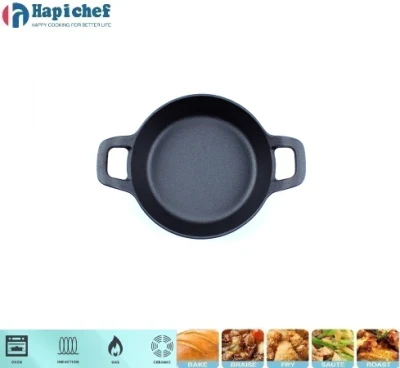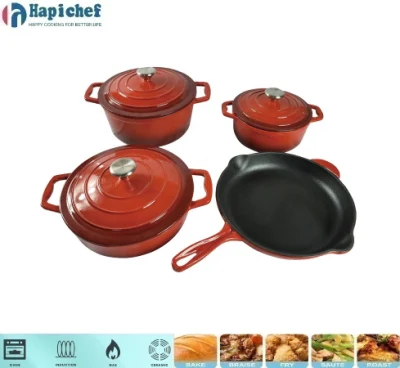frying pan
The frying pan, a long-standing staple in kitchens worldwide, continues to capture the attention of both amateur home cooks and seasoned chefs. This essential tool's allure lies not only in its ability to execute a variety of cooking techniques but also in the evolving innovations that enhance its functionality. Moreover, choosing the right frying pan can significantly impact cooking results, creating a need for an authoritative guide to navigating the diverse options available.

When selecting a frying pan, material consideration is paramount. Each type of material carries distinct cooking properties. Cast iron, for instance, is lauded for its superior heat retention. This quality makes it ideal for searing meats and maintaining a consistent temperature. Cast iron pans, when well-seasoned, offer a natural non-stick surface. However, they demand specific maintenance to avoid rust, thus ensuring their longevity.
All-clad stainless steel frying pans are another favorite among culinary professionals. These pans offer exceptional durability and resistance to warping, even under high heat. Their multi-layer construction often includes an aluminum or copper core, promoting even heat distribution. Yet, the allure of stainless steel is not without challenges; they require proper preheating and the use of oils to prevent food from sticking, especially in initial usage stages.

Non-stick frying pans cater to those seeking convenience and health-conscious cooking. Modern enhancements have significantly improved the durability of non-stick coatings, with some featuring reinforced ceramic or diamond particles. These advancements lead to longer-lasting products that tolerate higher cooking temperatures, all while reducing the need for added fats. When choosing non-stick cookware, understanding its limitations and avoiding metal utensils can maximize its lifespan.
In recent years, carbon steel frying pans have gained a following, offering a balance between the weight and heat retention of cast iron and the responsiveness of stainless steel. Over time, carbon steel pans develop a natural non-stick patina. However, similar to cast iron, they require seasoning and attentive upkeep to maintain their performance.
frying pan
Proper handling and care of frying pans extend beyond the material choice. Ensuring pans have cooled before washing, avoiding drastic temperature changes, and using recommended utensils all contribute to the pan's lifespan. For those investing in high-quality cookware, these practices safeguard against warping and preserve the manufacturer's intended cooking experience.
The market's expansion has seen the rise of environmentally conscious frying pan options, incorporating recycled materials and non-toxic coatings. These advancements appeal to eco-minded consumers, providing durable and safe alternatives while contributing positively to environmental conservation efforts.
Ultimately, the right frying pan is contingent on individual cooking habits, priorities, and the specific techniques one intends to employ. Whether the decision leans towards a traditional cast iron workhorse or a sleek non-stick model, the selected pan becomes an invaluable kitchen ally.
Trustworthiness in product selection is crucial, with buyers encouraged to consult verified reviews and expert recommendations. Brands known for transparency in material sourcing and warranties often assure reliable purchases. As culinary enthusiasts deepen their frying pan expertise, they curate not just meals, but also a collection of tools that enhance their culinary journey, preserving both tradition and innovation in the kitchen.
-
Transform Your Kitchen with Big Iron Cast Wok CraftsmanshipNewsAug.05,2025
-
Traditional Cooking with Cast Iron Woks and Pots with HandlesNewsAug.05,2025
-
Outdoor and Indoor Cooking with Cast Iron Wok MasteryNewsAug.05,2025
-
Maximize Outdoor Cooking Versatility with Premium Cast Iron WoksNewsAug.05,2025
-
Master Traditional Cooking with a Chinese Cast Iron WokNewsAug.05,2025
-
Culinary Power with High-Performance Cast Iron WoksNewsAug.05,2025
-
Why Every Kitchen Needs a Casserole Cast Iron DishNewsJun.24,2025
